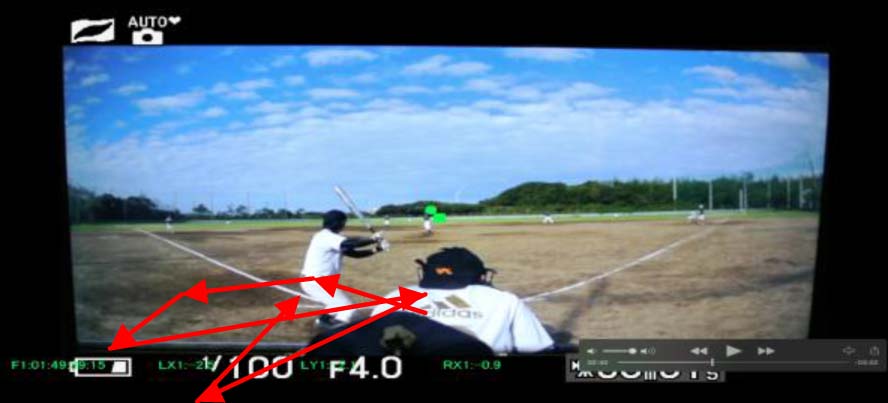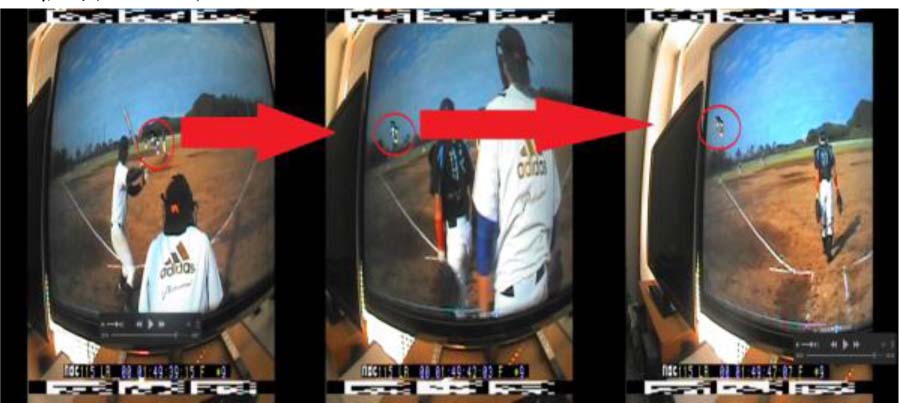
In order to compare the gaze movement of a first-class player and that of a player in training, two methods are usually employed: in one, the athlete wears eye movement measuring equipment and eye movement during play is then analyzed; in the other, an athlete who wore an eye movement measuring device watches a movie of the game which was taken by a video camera in advance in the laboratory [1]. Problem of these methods is that the player’s head movement is not acquired during play or while watching the movie.
Of course, the athlete’s gaze superimposed on the image of his/her field of view always agrees with his/her actual gazing position because the image of his/her field of view moves according to head movement since the eye movement measuring device is worn by the athlete. However, we can not know how much the head moved at that time. Furthermore, the image of the field of view also moves with head movement, and analysis after an experiment becomes difficult. Therefore, we used the equipment we developed, which can measure both head movement and eye movement simultaneously [2].Our ultimate goal is to measure an athlete’s head movement and eye movement while he or she is actually playing the sport. To test the validity of this system, we examined the results of an athlete observing in our laboratory a movie of sport play which had been taken in advance by a 4K camera[3].
References


The figures above are an example of only eye
movement and an example in which both head movement and eye movement were
detected.
The left figure is shows an example of eye movement superimposed on the movie
taken by a field of view camera attached to an eye movement sensor worn by a
player. The right figure is an example in which gaze movement, which is the sum
of head movement and eye movement, was superimposed on the movie taken by the
fixed camera, which was placed behind the catcher.
Since eye movement is superimposed on the field of view image obtained by the eye movement measuring equipment in the left figure, the field of view image also moves according to the observer’s head movement.
On the other hand, since head movement as well as eye movement are measured at the same time in the right figure, gaze movement is superimposed on the fixed camera behind the player, and the image does not move according to head movement. Therefore, the relationship between head movement and eye movement after the experiment can easily be analyzed.
We would like to express our sincere gratitude to the “High Rings” student baseball team at our university for kindly allowing us to take movies of them playing.
Example of eye movement Click to play the video on the right.
